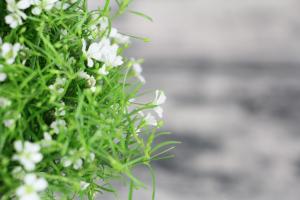How Much Space is Needed for a Tomato Plant
Tomatoes are one of the most popular crops grown in vegetable gardens worldwide because of their versatility, good taste, and health benefits. However, growing them may require different amounts of space depending on several factors. Tomatoes have a wide range of sizes, from small cherry tomatoes to big beefsteak varieties. Furthermore, the growth rate and plant structure can vary dramatically depending on the cultivar, soil, growing conditions and support systems used. Thus, how much space a tomato plant needs is a crucial consideration to optimize yield and avoid overcrowding.
Determining the Space Requirements
The amount of space needed for a tomato plant is dependent on several factors. Firstly, it should be determined based on the expected size of the mature plant. Determinate tomatoes, also known as bush tomatoes, are a compact and self-supporting variety. They typically grow between two to three feet tall and require less space than indeterminate varieties. Indeterminate varieties, on the other hand, can grow up to six feet tall or more, and vine out widely requiring at least two feet of space between them.
Additionally, the spacing requirement also depends on the support system to be used. Staking or caging requires less space per plant since the support removes the need for the plant to spread out. On the other hand, trellising will require more space as the plant needs to be trained and allowed to vine out. The direction of the trellis will also determine the amount of space needed between the plants.
The Optimum Spacing Techniques
Proper spacing is essential to growing healthy tomatoes. Overcrowding tomato plants may lead to several problems such as decreased yield, stunted growth, and an increased risk of disease. Therefore, gardeners should ensure the correct spacing distance that meets the specific tomato plant type and support system used.
For indeterminate tomatoes, a spacing distance of about two feet to three and a half feet between plants and at least four-foot spacing between rows will provide sufficient room for the plants to grow healthily. While for bushes or determinate varieties, a spacing distance of about one and a half feet to two and a half feet apart and three-foot spacing between rows should suffice. Staked tomatoes require at least two feet apart, while caged tomatoes need about three-foot spacing in a row.
Conclusion
Space requirements for tomato plants vary depending on several factors such as the tomato size, growth rate, soil, weather condition, and support system used. To ensure optimal growth and yield, gardeners should ensure the right spacing distance between the plants, an adequate support system, and timely fertilizing, especially during the flowering stage. Proper spacing will lead to larger and healthier plants and a bountiful harvest of delicious, juicy tomatoes.

 how many times do yo...
how many times do yo... how many planted tre...
how many planted tre... how many pine trees ...
how many pine trees ... how many pecan trees...
how many pecan trees... how many plants comp...
how many plants comp... how many plants can ...
how many plants can ... how many plants and ...
how many plants and ... how many pepper plan...
how many pepper plan...
































